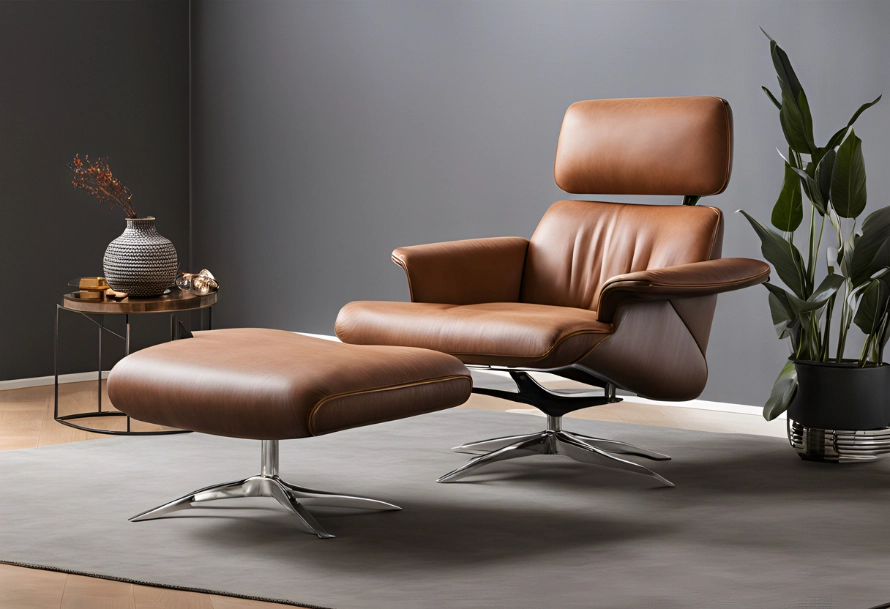Understanding the intricacies of your recliner not only aids in the assembly and disassembly process but also enhances its longevity by allowing you to perform minor repairs and maintenance independently. By familiarizing yourself with the various parts and mechanisms, you gain a deeper appreciation for the engineering that goes into creating these comfortable seats. With a little patience and the right tools, anyone can master the art of recliner assembly and disassembly, making it easier to move or repair your chair whenever necessary.

Contents
Understanding Recliner Components
Before embarking on the task of disassembly, it’s essential to familiarize yourself with the basic parts of a reclining chair. This knowledge will not only streamline the process but also prevent damage to the chair’s intricate mechanisms. Understanding these components is crucial for recognizing how each part interacts with others, ensuring the recliner functions smoothly and safely.
Knowing the components also allows you to identify potential issues more quickly, saving you time and potentially costly repairs in the future. Whether you are a DIY enthusiast or simply someone looking to save on professional service fees, understanding your recliner’s anatomy is a valuable skill. Here, we provide an overview of the most common parts found in recliners.
Common Reclining Chair Parts
- Backrest: The upper part of the recliner that supports your back. It is crucial for maintaining comfort and posture, making it one of the most important components. The backrest often contains mechanisms that allow for adjustable angles, enhancing the user’s comfort.
- Footrest: The extendable part of the chair that supports your feet. Its smooth operation is vital for complete relaxation, and it typically works in sync with the reclining mechanism. A well-functioning footrest can alleviate stress on the legs and improve circulation.
- Base Frame: The foundation of the recliner, housing the reclining mechanism. It provides stability and structure, ensuring that the recliner can support weight and movement. The frame is often crafted from durable materials like metal or hardwood to withstand prolonged use.
- Reclining Mechanism: The internal system that allows the chair to recline. It typically consists of a series of levers and springs that work together to adjust the chair’s position. Understanding its operation is essential for both disassembly and identifying any mechanical issues.
- Armrests: The parts of the chair where you rest your arms, which may sometimes include additional controls or storage. They are designed for comfort and convenience, contributing to the overall ergonomic design of the recliner.
- Levers or Pull Handles: Controls for adjusting the reclining position. These are often located within easy reach and are essential for the chair’s functionality. Proper maintenance of these controls can prevent wear and ensure smooth operation.
- Upholstery: The fabric or leather covering the recliner. It not only affects the chair’s aesthetic appeal but also its comfort and durability. Different materials require specific care to maintain their appearance and longevity.
Recliner Disassembly
Disassembling a recliner requires patience and precision. It’s important to take your time and follow each step carefully to avoid damaging any components. Following these steps will ensure a smooth process, allowing you to disassemble the chair efficiently and safely.
Preparation and organization are key to successful disassembly. Make sure you have all the necessary tools on hand and allocate ample time to complete the task without rushing. By approaching the process methodically, you can minimize the risk of losing parts or causing damage.
Step 1: Prepare Your Workspace
Start by selecting a spacious and well-lit area to work in. A clutter-free environment will make it easier to keep track of components and tools. Lay a soft cloth or sheet on the ground to protect the upholstery and components from scratches during disassembly. This also provides a designated space to place disassembled parts, reducing the risk of misplacing them.
Having a clean and organized workspace not only protects the recliner but also helps in maintaining focus and efficiency. Adequate lighting is crucial for spotting small screws and mechanisms, ensuring you don’t miss any crucial steps.
Step 2: Detach the Backrest
- Locate the Backrest Locks: Most recliners have locking mechanisms that secure the backrest to the base. These are often found at the junction of the backrest and base frame. Familiarize yourself with these locks by consulting the recliner’s manual or inspecting the chair closely.
- Unlock the Mechanism: Depending on the model, you may need to use a flathead screwdriver to release the lock. Gently pry the lock open while supporting the backrest. Take care not to apply too much force, as this can damage the locking mechanism.
- Remove the Backrest: With the lock disengaged, carefully lift the backrest upwards until it detaches from the base. Ensure you have a firm grip to prevent dropping it, as this could damage the backrest or surrounding areas.
Step 3: Remove the Footrest
- Extend the Footrest: Fully extend the footrest to access the connecting points. This position will allow you to see the attachment points clearly and work more comfortably.
- Identify the Fastening Screws: Locate the screws or bolts securing the footrest to the reclining mechanism. Pay attention to their placement, as this will be crucial for reassembly.
- Unscrew the Fasteners: Using an appropriate screwdriver or wrench, remove the fasteners while supporting the footrest to prevent it from falling. Keep the screws in a safe place to avoid losing them.
- Detach the Footrest: Once the fasteners are removed, gently slide the footrest away from the base. Handle it carefully to prevent any damage to its mechanism or the surrounding parts.
Step 4: Disassemble the Base Frame
- Access the Reclining Mechanism: Turn the recliner over to expose the underside of the base frame. This gives you a clear view of the mechanism and its connections.
- Release the Mechanism: Identify the bolts or screws securing the reclining mechanism to the base. Carefully unscrew them, ensuring you keep track of all components. Taking photos at this stage can be helpful for reassembly.
- Separate the Base Components: With the mechanism released, you can now separate the base components for easier handling and transport. Make sure to label or organize these parts to simplify the assembly process later.
Recliner Assembly
Reassembling a recliner follows the disassembly process in reverse. Careful attention to detail is required to ensure everything fits together correctly. Ensure that all components are clean and free of damage before proceeding, as this will promote smooth operation and longevity.
Taking your time during assembly will prevent mistakes and ensure that the recliner functions as intended. Patience and precision are key, as improper assembly can lead to malfunctions or even damage.
Step 1: Assemble the Base Frame
- Position the Base Components: Lay out the base components as per the original configuration. Refer to any photos or notes taken during disassembly to ensure accuracy.
- Attach the Reclining Mechanism: Align the mechanism with the base frame and secure it with bolts or screws, ensuring a snug fit. Double-check that all connections are tight to prevent any instability.
Step 2: Attach the Footrest
- Align the Footrest: Position the footrest with its corresponding mechanism attachment points. Ensure it’s properly aligned to avoid any operational issues.
- Secure the Fasteners: Insert and tighten the screws or bolts to secure the footrest firmly in place. Make sure not to overtighten, as this can strip the threads or damage the components.
- Test the Footrest: Ensure the footrest extends and retracts smoothly without any obstructions. This step is crucial for verifying that the assembly has been done correctly.
Step 3: Reattach the Backrest
- Position the Backrest: Align the backrest with the base frame, matching the locking mechanisms. Ensure it is properly seated to avoid any wobbling or instability.
- Engage the Locks: Push the backrest downwards until you hear the lock click into place, indicating a secure connection. Double-check that the locks are fully engaged to ensure safety and stability.
- Verify Stability: Test the recliner’s stability by gently applying pressure to the backrest and base. Make sure there are no unusual movements or sounds that could indicate a problem.
Tips for a Successful Recliner Disassembly and Assembly
- Refer to Manufacturer Instructions: Always consult the manufacturer’s manual for specific instructions and warnings related to your recliner model. This ensures you are aware of any particular considerations or features unique to your chair.
- Label Components: Use labels or markers to identify components and their corresponding locations to avoid confusion during reassembly. This simple step can save time and prevent frustration.
- Organize Fasteners: Keep screws, bolts, and other fasteners organized in small containers to prevent loss. Sorting them by type or location can streamline the reassembly process.
- Take Photos: Capture images of each step during disassembly to use as a reference during assembly. Visual guides can be incredibly helpful for ensuring accuracy.
Conclusion
Disassembling and assembling a recliner is a manageable task when approached methodically. By understanding the components and following a structured process, you can effectively handle your recliner without professional assistance. Whether you’re relocating or performing maintenance, this guide equips you with the knowledge to tackle the task with confidence.
Embarking on this endeavor will not only enhance your understanding of recliner mechanics but also empower you with the skills to maintain and troubleshoot your furniture in the future. This knowledge will serve you well in extending the life of your recliner and ensuring it remains a source of comfort for years to come.
